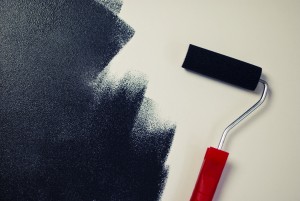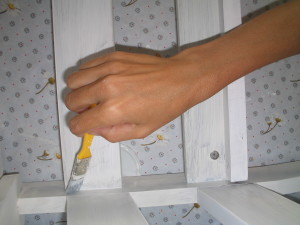Paint rollers and brushes are the most commonly used painting tools. Many think they know when to use paint rollers and paint brushes when it comes to home painting or even when attempting bigger scale commercial painting projects such as extensive floor painting in garages or shop floors.
While there is no rule as to which painting tool to use when it comes to both painting interior walls or exterior wall painting, it is always good to know which painting equipment is best used on certain areas, surfaces or even paint types for optimal results.
When to Use Paint Rollers
On Larger Surface Areas
This one may seem obvious but you’ll be surprised some prefer using paint brushes to hand paint even on larger areas because they feel that paint rollers require more arm strength.
Uneven painting quality is often most visible on larger substrates such as walls and ceilings because of the extent of surface area hit by sunlight or lighting. Paint rollers increases the chances of smoother consistency, and therefore ideal for bigger areas.
When The Paint is To Dry Uniformly
There are jobs such as applying epoxy paint for flooring or the painting of primer sealers in general that you’ll need the entire coating to dry quickly to prepare for the application of subsequent layers.
These are for painting works for surfaces preferred to be completed at one go and not to be halted halfway through the job in order to prevent any uneven tones, patchiness or visible joints from the end result due to the different rate of drying in some areas.
To Reach Higher Areas Without Scaffolding/ Ladders
Paint rollers are also obviously to be used to reach higher areas such as tall walls, high ceilings, and ceiling or beam surfaces above stairs in the stairwells.
In some cases where the ceilings are not as high, the painters can do away with ladders or the erecting of scaffolding. Paint rollers can be used with extension poles that come in lengths as long as 5 meters (16 feet) to reach wall and ceiling areas this high without having to climb on any supporting systems.
Where Wall Decorative Patterns are required
If you’re looking to have decorative designs and motifs on your walls, there are textured or patterned paint rollers that come with the ready embossed motifs for you to apply on to the walls by stamp-rolling it with paint for the desired repeated designs.
When to Use Paint Brushes
Along Edges/ Paint Edging
Although you can use corner paint rollers to paint along edges such as the strips of corners where beams or ceilings and walls meet, painting in straight strokes can sometimes be better achieved by using a paint brush to hand paint.
Position your paint brush such that the width of its toe runs along the edge of the area you’d like to apply paint on. Do this with the help of masking tapes to protect staining the surface that is perpendicular to it. Once the periphery edges of the area is taken care of, you’ll find it easier to paint the rest of the area in the center.
For Painting Smaller and non-Linear Details
For those who want to try wall painting and decorating ideas such as motifs with curves and loops that require more intricacies, smaller paint brushes will come in handy as they’re easier to maneuver around in your work due to the greater ease of control over the movement of strokes you’d like to achieve.
On Textured Walls
Methods such as dry brushing and dragging create a ‘linen’ look on wall textures with visible fine lines. Hand brushes, when used with thicker paint, are used in faux painting techniques to achieve textured patterns on usually accented walls. This can be done by hatching (criss-cross strokes) or applying in one-way vertical or horizontal directions.

